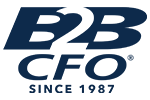
Increasing Company Value Chapter 8
Posted on March 31, 2020 by Terry Eve
The theme of my Blogs for this year is what I would include in a book about small business finance and accounting. This month I discuss increasing company value.
Company value has two basic components, Intrinsic and Extrinsic value drivers. Company value is ultimately determined by a multiple of anticipated cash flows, typically defined as EBITDA (Earnings Before Interest, Taxes, Depreciation & Amortization). The multiple is ultimately based on the anticipated return on investment and includes a risk premium, that is the higher the perceived risk of the investment, the higher the required return and thus the lower the multiple of EBITDA.
So let’s look at the intrinsic value drivers first. Intrinsic areas to consider are Policies & Procedures, including an Employee manual(s), Accounting and Finance Policies, an Internal Control review, and monthly financial statements that are timely and accurately prepared. Additional items would be agreements with key employees, Non Compete, Non Disclosure, Non Solicitation, and Confidentiality agreements. Further considerations may include properly protected Trade Marks, Service marks, and Patents. Finally are the corporate books up to date, are there shareholder agreements, but sell agreements and key man protection?
Why are the intrinsic value drivers important? Simply put, they reduce the risk to a potential buyer of a company and this increases the multiple of EBITDA they are willing to pay for a given company. Accordingly, everything else being equal, these intrinsic value drivers can push up the value of two similar companies with the same earnings.
Extrinsic Values relate to the financial performance of the company, its industry, past and projected growth, and the economic outlook in general. The growth potential, key management personnel and how the company will move forward are key external valuation drivers. Another consideration are artificially reducing (or increasing) EBITDA. Determining the normal and customary costs Vs the costs of the company can be an add back (or reduction) to the EBITDA number. These extrinsic value drivers drive the cash flow of the company, the key valuation metric. Further, this is an area where a part time CFO can impact your business by increased profitability, additional growth, and increased cash flow. Every dollar of increased profit is multiplied by some number and thus increases the company’s value.
Ultimately, companies have a range of values. These are Fair Market Value, Investment Value and Synergy Value.
- Fair Market Value is typically the lowest valuation is defined in part by IRS guidelines, and is used primarily for gifting, ESOPs, and other internal transfers.
- Investment Value is the amount and investor will spend and is based on an anticipated return on their investment (ROI). This is typically more than Fair Market Value, and less than Synergy Value.
- Synergy value is typically a purchase by another company in the industry that believes the value of the acquisition is worth as the growth in profits will be significantly increased by adding new customers, reductions in overhead costs and other areas. This is often shown as the equation: 1 + 1 = 3. This means they will pay more to increase market share, integrate their products with a new customer base and deliver other opportunities to increase revenues and reduce costs.
A part-time CFO can significantly assist the business owner drive business value. Their experience in increasing growth, profitability and cash flow as well as reducing the risk to a potential purchaser can significantly increase your firms intrinsic and extrinsic values!

